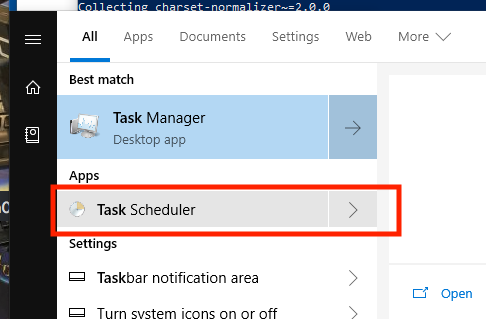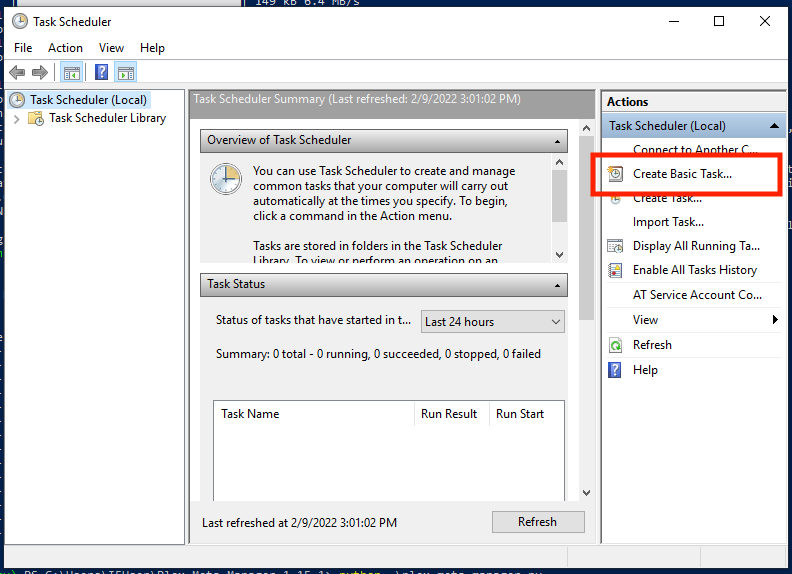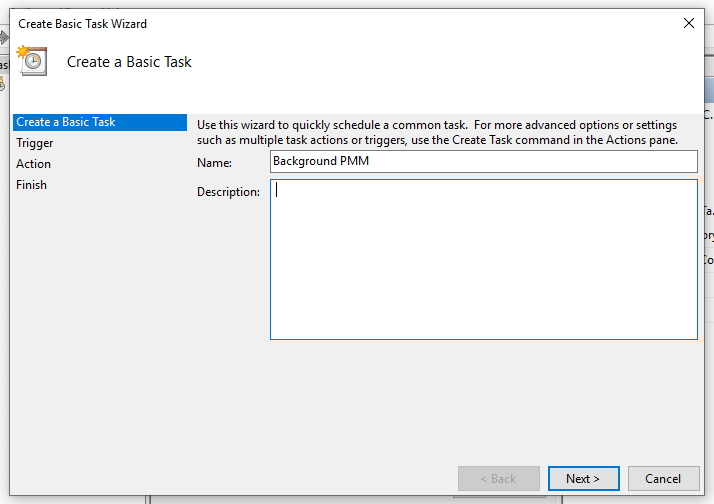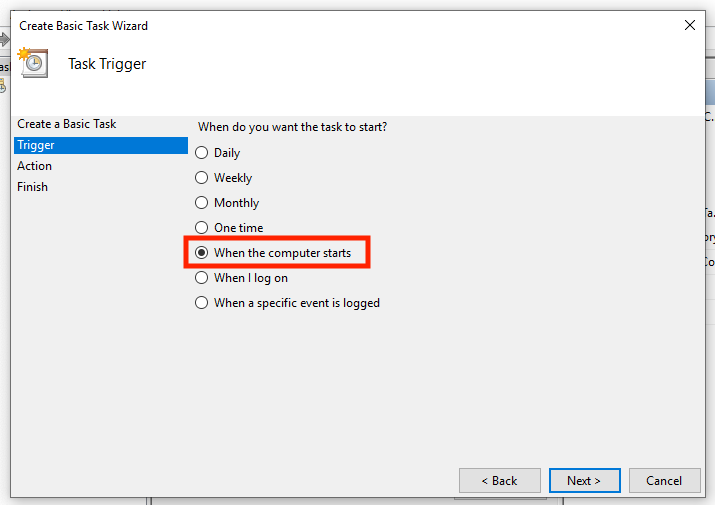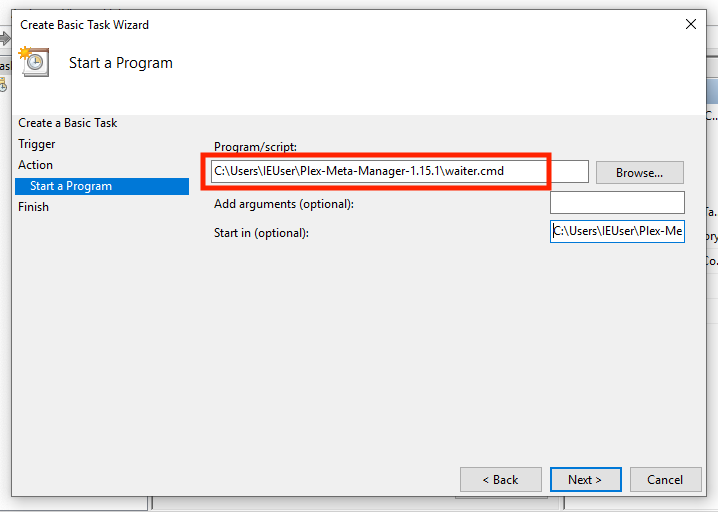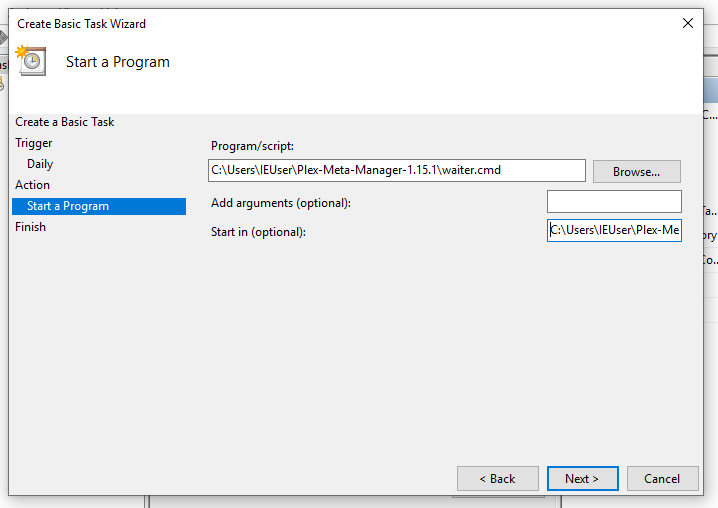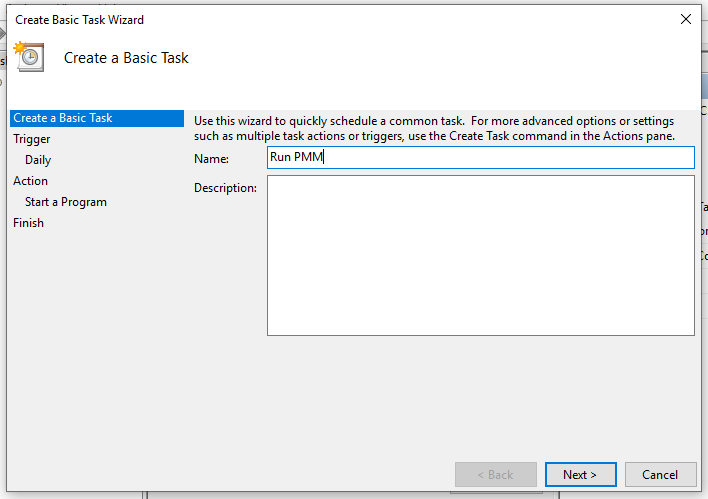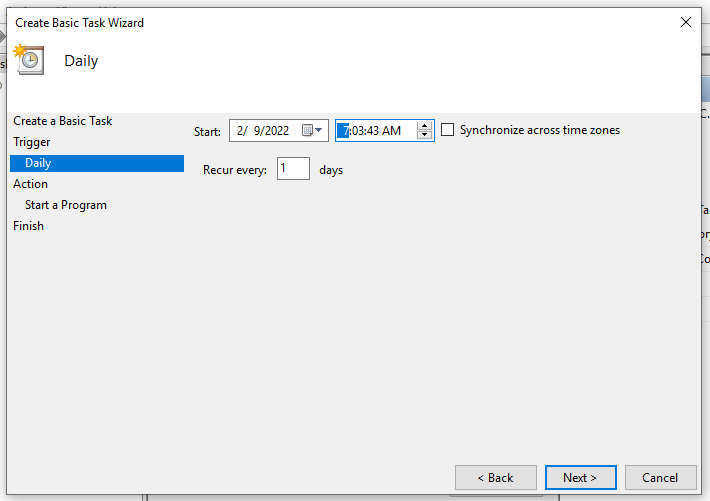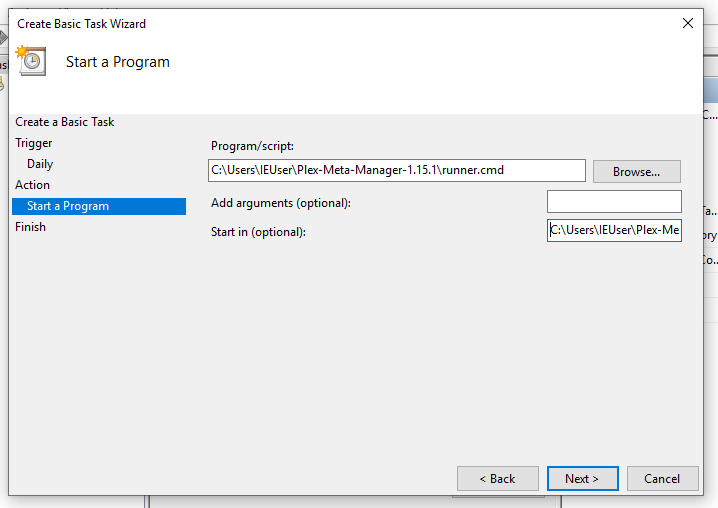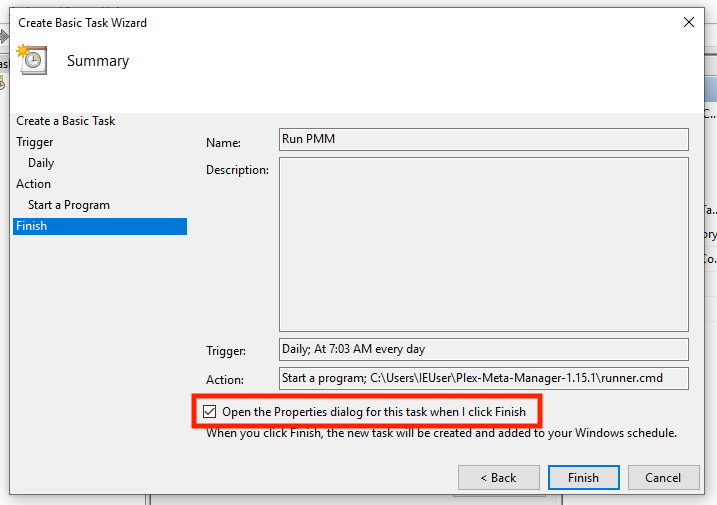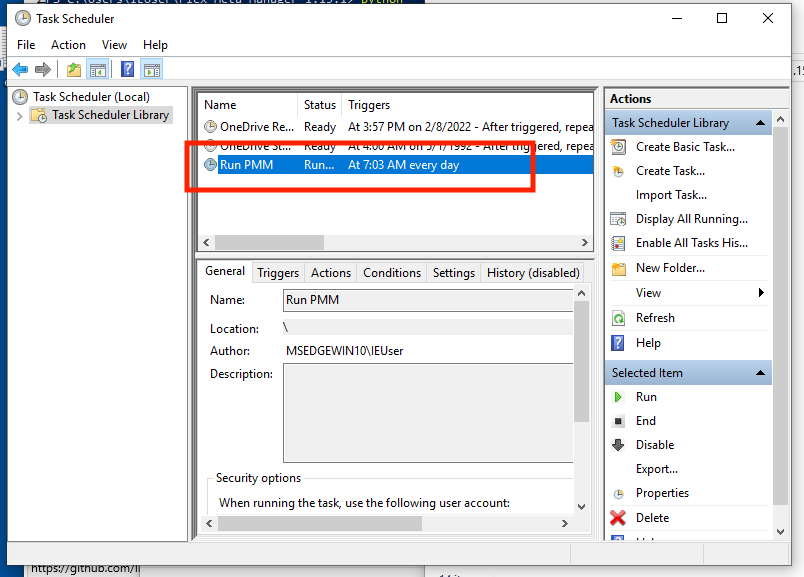Scheduling Kometa Runs Guide¶
Kometa is designed to be a background running service that "wakes up" and "sleeps" when it is scheduled to do so. By default unless configured using the Time to Run Command, Kometa expects to run every day at 5AM local time.
Whilst it is possible to have python kometa.py running in an open window constantly, this is not the recommended approach as it relies on an always-open command window that can be obtrusive to the user.
Instead, it is recommended to set an automated scheduling service so that Kometa can run in the background when scheduled to without any visible impact to the user (other than the Plex libraries and playlists updating).
To control how individual parts of Kometa are scheduled see the Schedule detail
IMPORTANT: Every time you see /path/to below, it's a placeholder for the path to that directory on your system.
Using docker is the simplest and most robust solution to automating Kometa scheduling.
When running Kometa within docker, the session will resume after a system reboot (assuming Docker is set to start at system startup, which is the default) and Kometa will run in the background at all times.
There's a Docker Walkthrough with more detailed instructions on setting up Kometa within docker. The simplest command to facilitate a docker run is:
docker run -d \
--restart=unless-stopped \
-e TZ=<TIMEZONE> \
-v /path/to/config:/config:rw \
kometateam/kometa
/path/to/config to reflect where you've installed Kometa.
TZ=
This will run Kometa in the background persistently until it is stopped by the user. While the docker container will be persistently running, Kometa will not begin the run until the scheduled time.
Further customizations of the docker run command can be used to specify set times to run Kometa, further information on this and other Run Commands can be found here
Windows Task Scheduler is advised for those who followed the Windows instructions in the Local Walkthrough Guides and/or do not want to run Kometa within docker.
Windows Task Scheduler allows the user to run commands and services at scheduled times and intervals.
There are two methods of running Kometa: * Single run Scheduled Task * Background run Scheduled Task
These will be explained further down this page.
These guides assume the user has followed the Windows instructions in the Local Walkthrough Guides which includes setting up the virtual environment. Please also ensure to edit any commands to be reflective of the live environment (such as usernames, installation directories).
Background Run Scheduled Task¶
This method will start Kometa at system startup and will keep Kometa running in the background indefinitely. The user can then define set days and times for the Configuration File to be processed, and Kometa will handle processing as and when required.
This is the recommended approach as it allows the user additional control over how and when Kometa processes.
If you don't specify a time, the script will run at 5AM each day. You can change this with the time-to-run runtime flag.
Background Run Scheduled Task
- Create a
waiter.cmdfile by opening the text editor (i.e. Notepad, TextEdit) and pasting the following code:
-
Open Task Scheduler by searching for it in the Start Menu or by opening the Run window (Windows + R) and typing taskschd.msc before hitting OK.
-
** Ensure that Task Scheduler is opened and not Task Manager **
-
Select "Create a basic task" on the right-hand column
-
Give the task a name, in this example
Background Kometaand then select "Next" -
Choose the frequency that Kometa should run and then select "Next",
When the computer startsis recommended. -
Choose the action "Start a program" and select "Next".
-
Click "Browse", Navigate to the Kometa directory and choose
waiter.cmd, which was created in Step 1, then select "Open". NOTE: Your path may vary from the illustration here; navigate to the file you created and saved in Step 1. -
Copy the directory everything up to but not including
waiter.cmdfrom the "Program/Script" field, and paste it into the "Start in" field. This isC:\User\IEUser\Kometa-1.15.1in the example below, then select "next". NOTE: Your path may vary from the illustration or example. -
Click "Finish".
-
Click "Task Schedule Library" on the left. The "Background Kometa" task should be visible.
Kometa will now launch at system startup, but will wait until the user-specified scheduled time before executing, and will then wait in the background for the next scheduled run.
Single Run Scheduled Task¶
This method will start Kometa at the desired time, immediately begin running the Configuration File and will then kill the process once it has completed.
Single Run Scheduled Task
- Create a
runner.cmdfile by opening the text editor (i.e. Notepad, TextEdit) and pasting the following code:
-r/--run flag which triggers an immediate run. Once complete, Kometa will exit.
Save this file to C:\Users\USERNAMEHERE\Kometa\runner.cmd`.
-
Open Task Scheduler by searching for it in the Start Menu or by opening the Run window (Windows + R) and typing taskschd.msc before hitting OK.
-
** Ensure that Task Scheduler is opened and not Task Manager **
-
Select "Create a basic task" on the right-hand column
-
Give the task a name, in this example
Run Kometaand then select "Next" -
Choose the frequency that Kometa should run and then select "Next",
Dailyis recommended. -
Specify the first date and time at which Kometa should run and then select "Next".
-
Choose the action "Start a program" and select "Next".
-
Click "Browse", Navigate to the Kometa directory and choose
runner.cmd, which was created in Step 1, then select "Open". -
Copy the directory everything up to but not including
runner.cmdfrom the "Program/Script" field, and paste it into the "Start in" field. This isC:\User\IEUser\Kometa-1.15.1in the example below, then select "next". -
Check "Open the properties dialog" if desired (not required) then select "Finish".
- Click "Task Schedule Library" on the left. The Kometa Run task should be visible.
Kometa will now run at the set date/time you selected in Step 6, and will run each subsequent day at the same time.
- Create launchd service:
A couple examples; you'll want to edit the THINGS IN ALL CAPS to reflect your system.
Change /path/to/kometa to reflect where you've installed Kometa.
Keep Kometa running constantly, let it wait to do its thing at 3AM:
<?xml version="1.0" encoding="UTF-8"?>
<!DOCTYPE plist PUBLIC "-//Apple//DTD PLIST 1.0//EN" "http://www.apple.com/DTDs/PropertyList-1.0.dtd">
<plist version="1.0">
<dict>
<key>Label</key>
<string>com.YOUR_USERNAME.kometa</string>
<key>ProgramArguments</key>
<array>
<string>sh</string>
<string>-c</string>
<string>kometa-venv/bin/python kometa.py --config /path/to/kometa-config/config.yml</string>
</array>
<key>UserName</key>
<string>YOUR_USERNAME</string>
<key>WorkingDirectory</key>
<string>/PATH/TO/KOMETA</string>
</dict>
</plist>
Run Kometa every 6 hours, running it immediately and letting it quit:
<?xml version="1.0" encoding="UTF-8"?>
<!DOCTYPE plist PUBLIC "-//Apple//DTD PLIST 1.0//EN" "http://www.apple.com/DTDs/PropertyList-1.0.dtd">
<plist version="1.0">
<dict>
<key>Label</key>
<string>com.YOUR_USERNAME.kometa</string>
<key>ProgramArguments</key>
<array>
<string>sh</string>
<string>-c</string>
<string>kometa-venv/bin/python kometa.py --config /path/to/kometa-config/config.yml --run</string>
</array>
<key>StartCalendarInterval</key>
<array>
<dict>
<key>Hour</key>
<integer>6</integer>
</dict>
<dict>
<key>Hour</key>
<integer>12</integer>
</dict>
<dict>
<key>Hour</key>
<integer>18</integer>
</dict>
<dict>
<key>Hour</key>
<integer>24</integer>
</dict>
</array>
<key>UserName</key>
<string>YOUR_USERNAME</string>
<key>WorkingDirectory</key>
<string>/PATH/TO/KOMETA</string>
</dict>
</plist>
A useful tool to generate these plist files is https://zerolaunched.herokuapp.com/
Save this file as com.YOUR_USERNAME.kometa.plist in ~/Library/LaunchAgents.
- Load and start the agent 🚀
Retrieve your user id with id -u in Terminal. You'll need it for the commands in this step.
Load the agent by executing the following commands:
And then kick-start it with:
Note that this command uses the label, not the plist filename. The -k options means that the service will first be killed, if running.
The agent should now be active and starting the program according to the schedule you set.
- Create the service file:
Put the following into the file:
# /etc/systemd/system/kometa.service
[Unit]
Description=Kometa
After=network-online.target
[Service]
User=USER
Group=GROUP
Type=simple
Environment=LC_ALL=C.UTF-8
Environment=LANG=C.UTF-8
WorkingDirectory=/path/to/kometa
ExecStart=/path/to/kometa/kometa-venv/bin/python /path/to/kometa/kometa.py
Restart=always
RestartSec=10
[Install]
WantedBy=default.target
Change USER and GROUP to reflect your user and group.
Change /path/to/kometa to reflect where you've installed Kometa.
NOTE: This is assuming you created the kometa-venv virtual environment as described in the Local Walkthrough
Save and close the file.
-
Load and start the service
-
You can check whether the service is running with:
The cron utility is used for running scripts and commands at regular intervals, and at specific times and dates. It’s built into most Operating Systems (namely Linux and Mac), and provides a very useful way to schedule tasks on your server. It also works for running Docker commands on a schedule.
- Decide when you want to run Kometa
cron needs a specific syntax to express schedules. A cron schedule is something like "Every Tuesday at 4" or "5 minutes past every other hour".
You can generate the required line by checking boxes using something like crontab-generator.
The command you use in crontab will probably be the command you use to run it on the command line.
A command you could use for this:
Change/path/to/kometa to reflect where you've installed Kometa.
This is an example, which does nothing but run the script immediately. If you want to add additional flags you can do so.
NOTE: This is assuming you created the kometa-venv virtual environment as described in the Local Walkthrough
-
Open the system crontab for editing:
-
Paste in the crontab line you got from
crontab-generator, or type in one of your own. Depending on the editor being used, you may need to put it into insert mode first. There's a good chance it'svi, in which case you need to pressito put it into insert mode, after which you will see-- INSERT --in the lower left. -
Save and close the file. How you do that depends on which editor is being used. There's a good chance it's
vi, in which caseESC : w RETURNwill save andESC : q RETURNwill exit.
